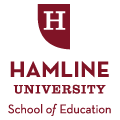Improving Number Sense in High School Students through Science Instruction
Term
Fall 12-14-2015
Capstone
Thesis
Degree Name
MAED: NSEE
Primary Advisor/Dissertation Chair
Karen Moroz
Secondary Advisor/Reader One
Jennifer Pillsbury
Peer-Reviewer/Reader Two
Mark Luecke
Abstract
The research question addressed in this capstone was, can science class be used to improve number sense in high school students? It documents one teacher’s attempt to modify a pre-existing science curriculum for 9th graders to focus on strategies that prompt students to understand the meaning of numbers and how they relate to the real world. A pre and post test were created to assess number sense in several domains that are commonly found in science class: relative quantity (number lines), simple operations as they relate to real life scenarios, decimals, fractions and percentages. The author documents the details of the study, how it was assessed and uses related research literature to construct meaning and validate the study. She discusses the successes and pitfalls encountered and suggests ways in which future research could build upon the results found here. The conclusion of the research is 1) Students did show significant improvement in number sense in several domains; 2) Small sample size and variation between teachers’ instruction strategies added significant sources of error and 3) Further research is necessary to confirm that the strategies employed are indeed successful.
Research Methodology
Curriculum Development, Observation, Survey
Keywords
Interdisciplinary Teaching, Mathematics, Science, Teachers/ Teaching
Recommended Citation
Bristor, Melanie Martha, "Improving Number Sense in High School Students through Science Instruction" (2015). School of Education and Leadership Student Capstone Theses and Dissertations. 276.
https://digitalcommons.hamline.edu/hse_all/276

